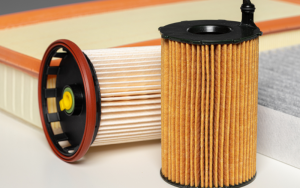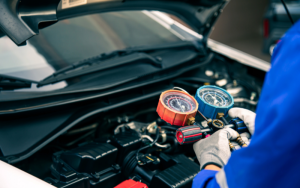Maintaining your vehicle involves several important tasks, one of which is the often-overlooked – replacement of the fuel filter. KG Fuel Filters are among the top choices for this essential component, which safeguards your engine from damaging particles. This guide offers a detailed, step-by-step methodology for replacing your fuel filter, helping your vehicle maintain optimal performance.
The Importance of Fuel Filters

Before we delve into the replacement procedure, it’s crucial to understand the function of fuel filters. These filters cleanse the fuel of impurities before it enters the engine, trapping dirt, rust, and other harmful particles. As the filter ages, it can become clogged, necessitating timely replacement to maintain engine health.
Role and Design of Fuel Filters
Fuel filters consist of a filtering medium housed within a casing. Their designs vary, including options like replaceable elements, in-line filters, and screw-on types. The filter’s tiny openings allow only clean fuel to pass, trapping particles like rust and dirt. This filtration is vital to prevent these contaminants from reaching the engine cylinders through the injectors, ensuring only small, non-clogging particles pass through.
Fuel filters come in various designs to accommodate different vehicles and engines, with some featuring separate inlet and outlet chambers divided by the filter element.
How Fuel Filters Work?

When fuel enters the tank, it might carry sediment or dirt. This fuel passes through the fuel injector before reaching the engine cylinders for combustion. Large, abrasive particles in the fuel can damage engine components like valves and pistons over time. These contaminants can also reduce fuel efficiency and engine performance, leading to potential misfires and other issues.
Recognizing When to Change Your Fuel Filter

Knowing when to replace your fuel filter is key. Typically, it’s advised to do so every 30,000 to 40,000 miles, but this varies with vehicle type and usage. Symptoms of a failing fuel filter include poor engine performance, starting difficulties, and decreased fuel efficiency.
Troubleshooting a faulty fuel filter can be complex, as its symptoms often overlap with those of other issues in the fuel delivery or ignition systems. Nonetheless, recognizing these indicators can steer you towards identifying the actual problem. Typical signs of a clogged or dirty fuel filter encompass:
- Engine misfiring, typically accompanied by an active Check Engine Light
- Unsmooth engine operation
- Delayed response and reduced power during acceleration
- The engine stalling, whether in motion or idle
- Reduced fuel efficiency
- Difficulty in getting the engine to start
- The presence of a raw fuel odor in the exhaust or around the fuel filter area
To zero in on the fuel filter as the potential culprit, inspect the fuel filter housing for any signs of leakage, which could result from cracks, loose components, or rust. Also, utilize the onboard diagnostics of vehicle to search for error codes that may indicate a lean fuel mixture.
Perform a road test to evaluate the vehicle performance, paying close attention to any sluggish behavior or atypical engine sounds, like knocking.
If these symptoms are present, considering a fuel filter replacement is advisable. It’s a cost-effective maintenance strategy that might solve your issue. Even if the fuel filter isn’t the primary cause, having a new one installed is beneficial, as it rules out one potential problem, allowing you to continue with your troubleshooting process.
Selecting the Right Fuel Filter
Quality is crucial when choosing a fuel filter. KG Fuel Filters are renowned for their durability and efficiency, suitable for a range of European and Asian commercial vehicles. Ensure the filter you select is compatible with your vehicle specifications.
Detailed Instructions for Fuel Filter Replacement
- Prioritize Safety: Work on a level surface with a cool engine. Wear protective gear like safety glasses and gloves.
- Depressurize the Fuel System: Usually done by removing the fuel pump fuse and running the engine until it stops.
- Find the Fuel Filter: Consult vehicle manual to locate the filter, typically along the fuel line or near the fuel tank.
- Remove the Old Filter: Disconnect the fuel lines from the old filter, readying a container for any spillage.
- Install the New Filter: Position the new KG Fuel Filter where the old one was. Reattach the fittings and fuel lines.
- Leak Check: After installation, turn on the ignition to activate the fuel pump and check for leaks.
- Vehicle Testing: Start the engine and listen for any unusual sounds or issues.
Maintenance for Longevity
Following measures can be taken to maintain the longevity of your filters:
- Regular filter checks
- Adherence to vehicle maintenance schedule
- Including using quality filters like KG Fuel Filters
Also Read: Optimizing Performance with KG Hydraulic Filters
KG Fuel Filters: Synonymous with Quality and Dependability
Changing your fuel filter is a manageable yet impactful task for your vehicle performance. Opting for KG Fuel Filters means choosing a product synonymous with reliability and quality, keeping your vehicle in prime condition. Visit KG Technologies India (www.kgindia.co.in) for more information on our products and their benefits for your vehicle.


